Boosting your home’s curb appeal can be as simple as giving your front door a new coat of paint. You might think this task requires removing the door, but that’s not necessary.
Painting your door while it’s still on its hinges saves time and keeps your home secure throughout the process.
In this guide, I’ll show you how to achieve professional-looking results without the hassle of door removal. You’ll learn how to prepare your door for painting, select the right paint and color, and apply it for a smooth finish.
Then, I’ll offer advice on drying times, re-coating, and how to maintain your door’s vibrant look.
If you’re feeling daunted, don’t worry; we will also explore when it might be wise to call in professional painters.
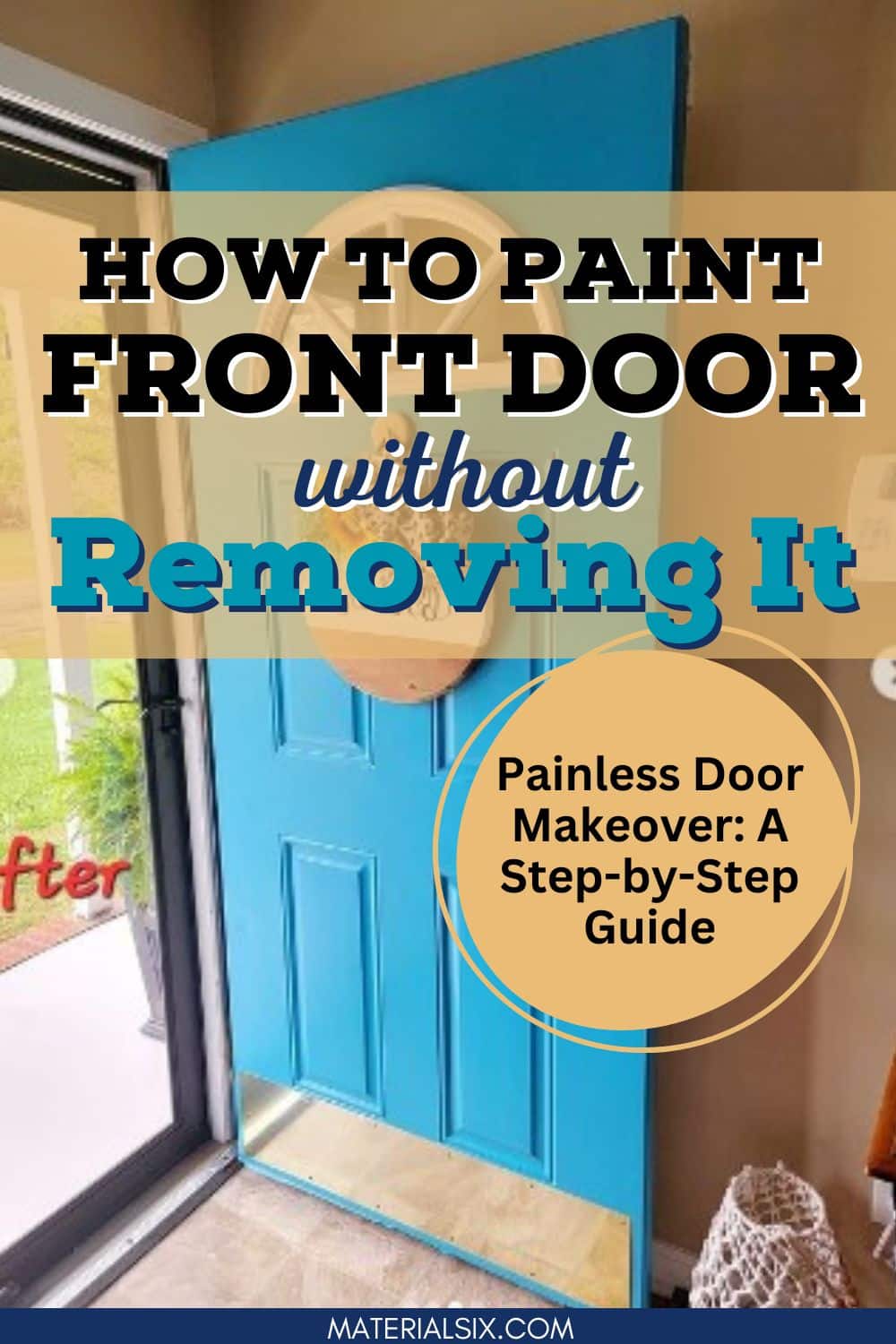
Begin by giving your front door a thorough wash to remove dirt, dust, and grime.
A mixture of mild soap and water works well for this task; just make sure to rinse the surface afterwards and allow it to dry completely.
Next, gather the necessary materials: quality exterior paint, a primer if needed, fine-grit sandpaper, paintbrushes or rollers, painter’s tape, and drop cloths to shield surrounding areas from paint splatters.
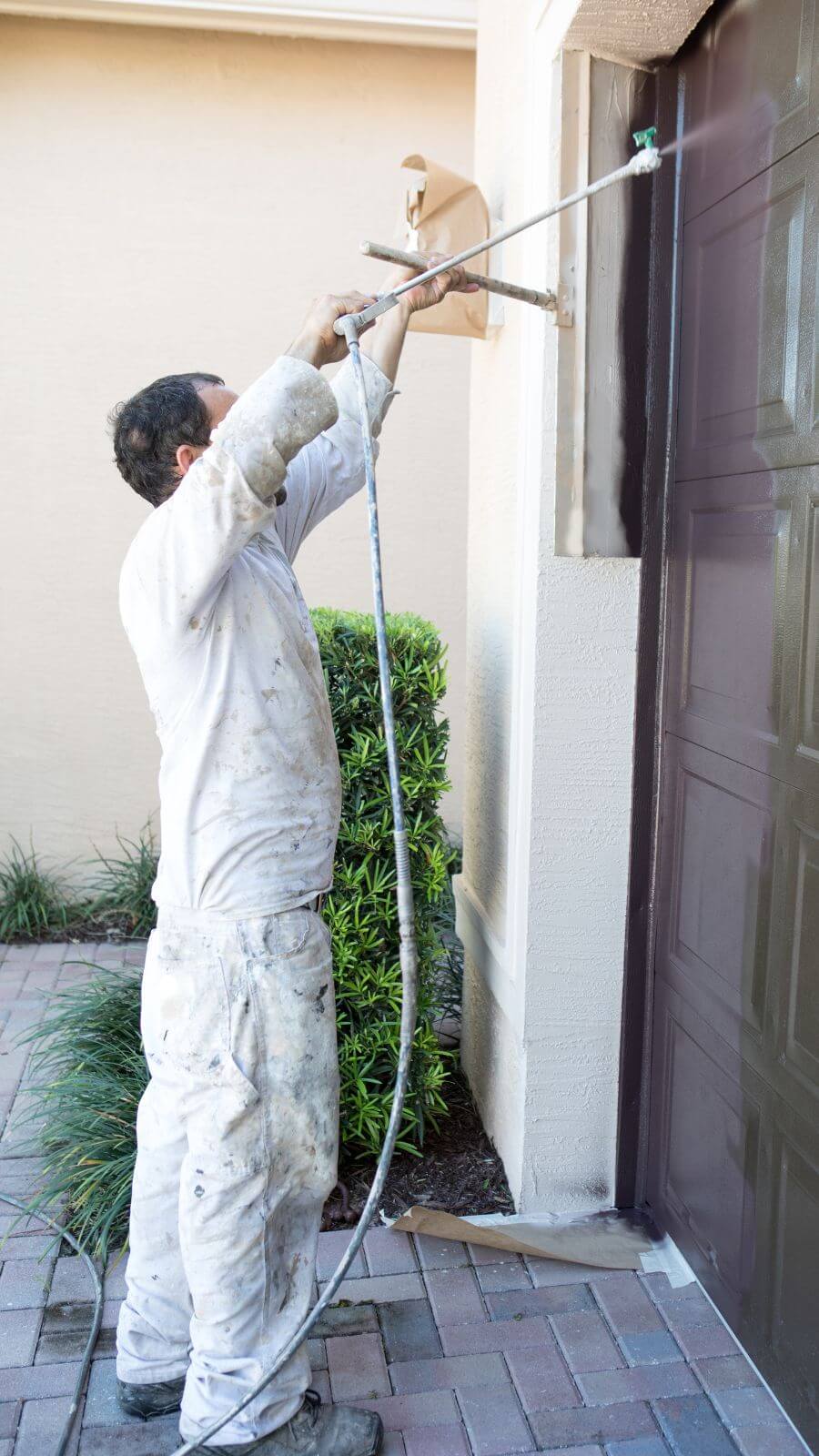
Carefully cover the door hardware, doorbell, and any other non-paintable elements with painter’s tape. It’s key to secure loose edges of the tape to avoid paint bleeding through.
Finally, lay down your drop cloths to protect your porch or entryway from any accidental spills.
Choosing the Right Paint and Color
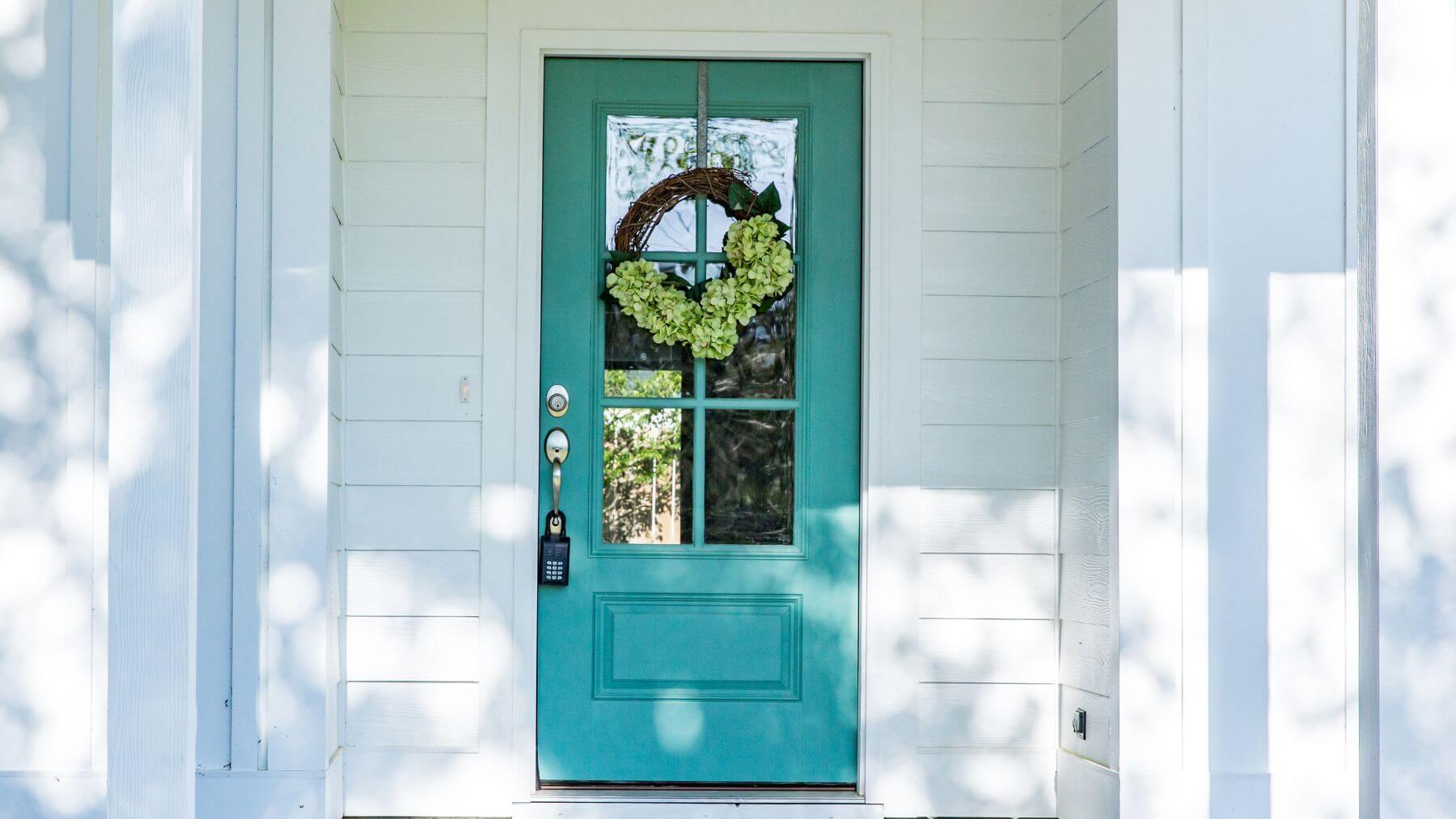
Before you dip your brush into a new can of paint, consider the type of paint that best suits exterior doors. Opt for an exterior acrylic latex paint. It will resist peeling and fading, withstanding various weather conditions.
Remember to check the paint’s label for ‘exterior’ use to ensure its durability outdoors. As you select a hue, aim for harmony with your home’s outer palette. Your front door should be a natural extension of the existing colors on your siding, roof, and trim.
A bold color might be striking if your home’s facade is neutral. Conversely, a more understated tone could balance out a vivid exterior.
Hold swatches against the current elements and observe them at different times of day. The shifting light can dramatically alter how the paint looks.
With the right paint and color, your front door can become an inviting highlight of your home’s appearance, welcoming both guests and passersby alike.
Sanding: The Foundation for Smooth Results
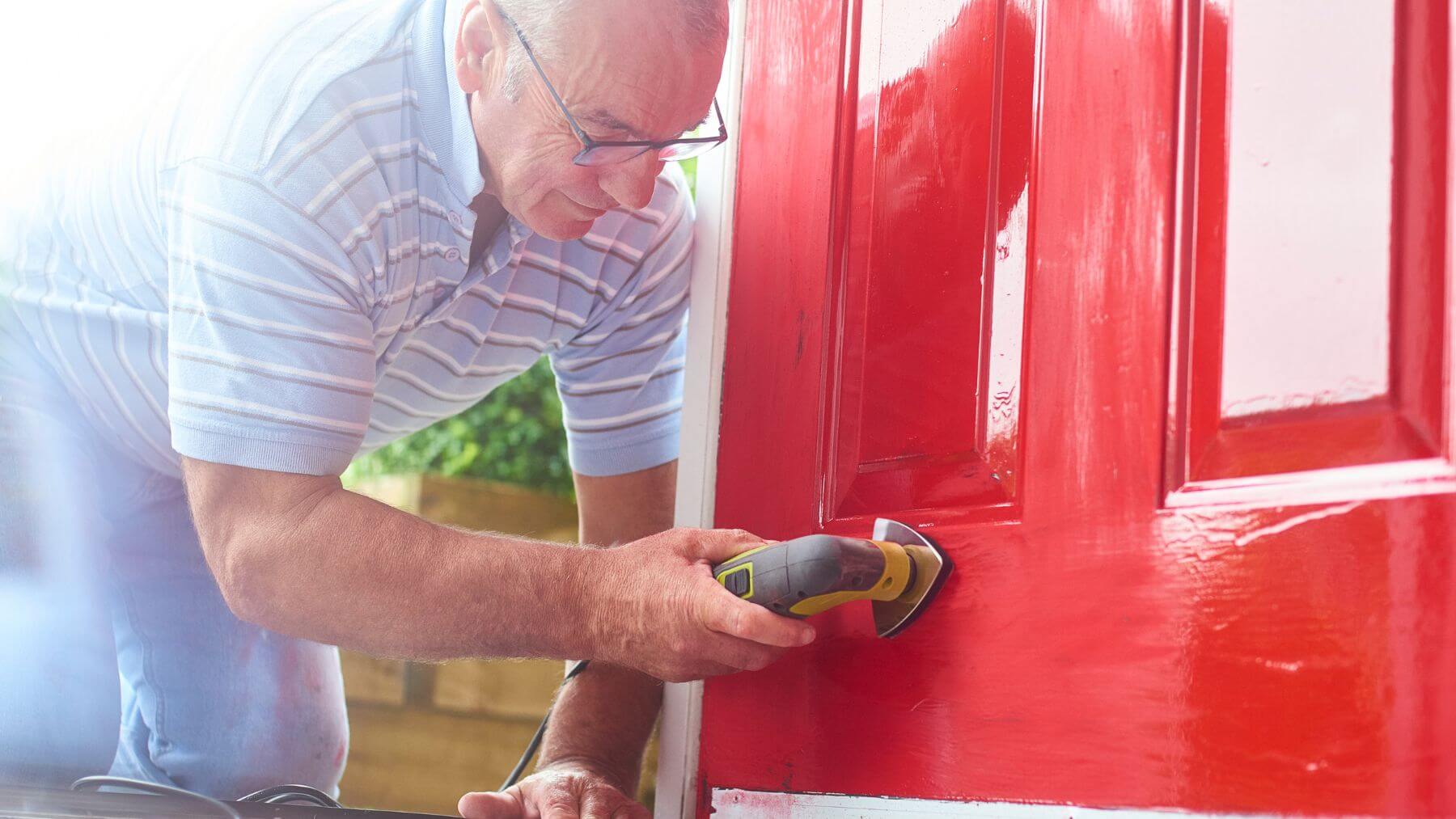
Think of sanding as creating the ideal canvas for your paint to adhere to.
You’ll start by gently wiping down the door with a clean, damp cloth to remove any dust and debris, ensuring a smooth surface to work on.
Once dry, use medium-grit sandpaper to evenly scuff up the door’s surface. This roughens up the existing finish, allowing the new paint to cling effectively.
Remember, you don’t need to strip the door down—just a thorough buffing will do the trick. Pay particular attention to areas with flaking paint, smoothing these out for uniformity.
Following the initial sanding, switch to a fine-grit sandpaper to help smooth out any rough patches for a seamless finish. While sanding, keep the door on its hinges and gently support it to prevent any unnecessary strain on them.
Work in sections, from top to bottom, ensuring that every inch is attentively prepped. Once finished, brush away the accumulated dust or use a handheld vacuum before proceeding to the next step.
This preparation is subtle yet significant, laying the groundwork for a professional-looking paint job.
Applying the Primer and Paint
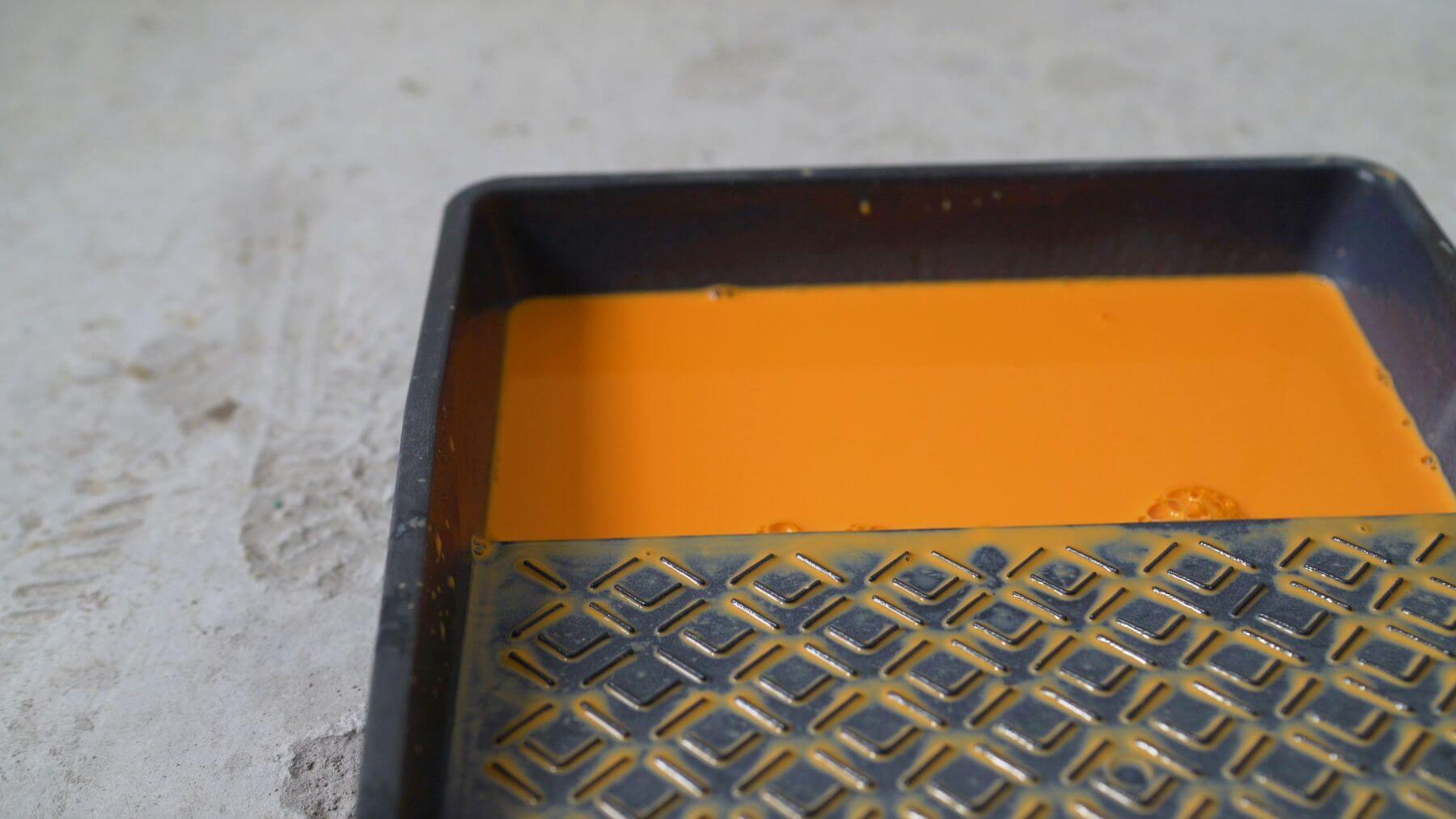
Start with a clean slate by ensuring the door surface is free of dust after sanding. If you’re working with an unpainted door or raw wood, apply a coat of primer.
This undercoat serves as a secure base for the topcoat to adhere to, promoting longevity and uniformity in appearance. Give the primer ample time to dry as per the manufacturer’s recommendations before moving to the next step.
With the primer set, begin painting your front door. Dip your brush or roller in the exterior paint designed for front doors, and start at the top, working your way down.
Use vertical strokes for a smoother finish and to prevent drip marks. If using a brush, pick one with synthetic bristles designed for use with the type of paint you have chosen.
With rollers, go for a high-density foam roller to avoid the stipple effect that traditional rollers may leave.
Apply the paint generously but avoid overloading your tool, which can lead to runs and sags on the door. Pay attention to the panel details, if any, brushing into the crevices and smoothing out the finish.
Overlay each stroke slightly for complete coverage, maintaining a wet edge to blend each stroke seamlessly as you progress.
Allow the first coat of paint to dry completely. The waiting period can vary, so consult the paint can for guidance.
Once dry to the touch, assess the coverage. If you spot any thin areas or the color isn’t as vibrant as you’d like, apply a second coat.
Repeat the painting technique from the first layer, ensuring even and thorough coverage for a professional-looking result.
Drying and Re-coating: Patience is a Virtue
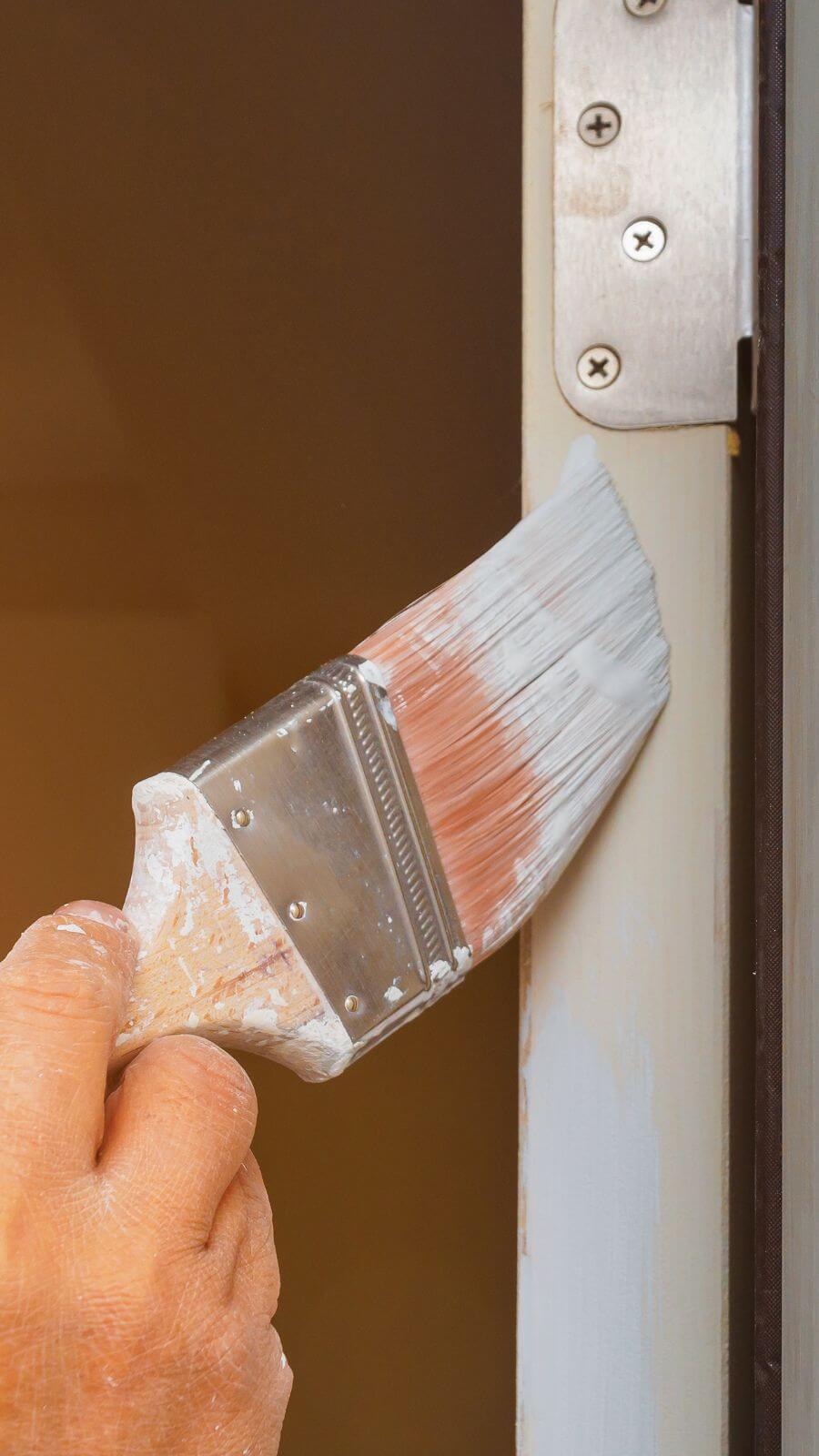
After laying down the paint layers on your front door, waiting for them to dry proves crucial for a durable, flawless finish.
Generally, you should allot a minimum of two to four hours for the initial coat to dry completely. However, this time frame can vary based on humidity, temperature, and the paint type used.
For oil-based paints, you might have to wait up to eight hours. Resist the urge to rush this stage; opening or closing a tacky door can leave fingerprints and smudges, marring your hard work.
Once the base coat feels dry to the touch and leaves no residue when gently pressed, you’re ready to evaluate the need for subsequent coats.
Should the first layer appear uneven or show traces of the old color, preparing for a second layer is wise. Just like the initial application, permit ample drying time post the second coat.
This methodical approach, though it tests your patience, is the secret to a professional-looking finish that endures the test of time.
Mindful maintenance will preserve your door’s vibrant new look. Regular cleaning and the occasional touch-up can fend off signs of wear and keep your entrance inviting for years to come.
Remember, diligence and patience during painting and drying not only bring out the beauty in your door but also save you from future repaints.
Finishing Touches and Maintenance
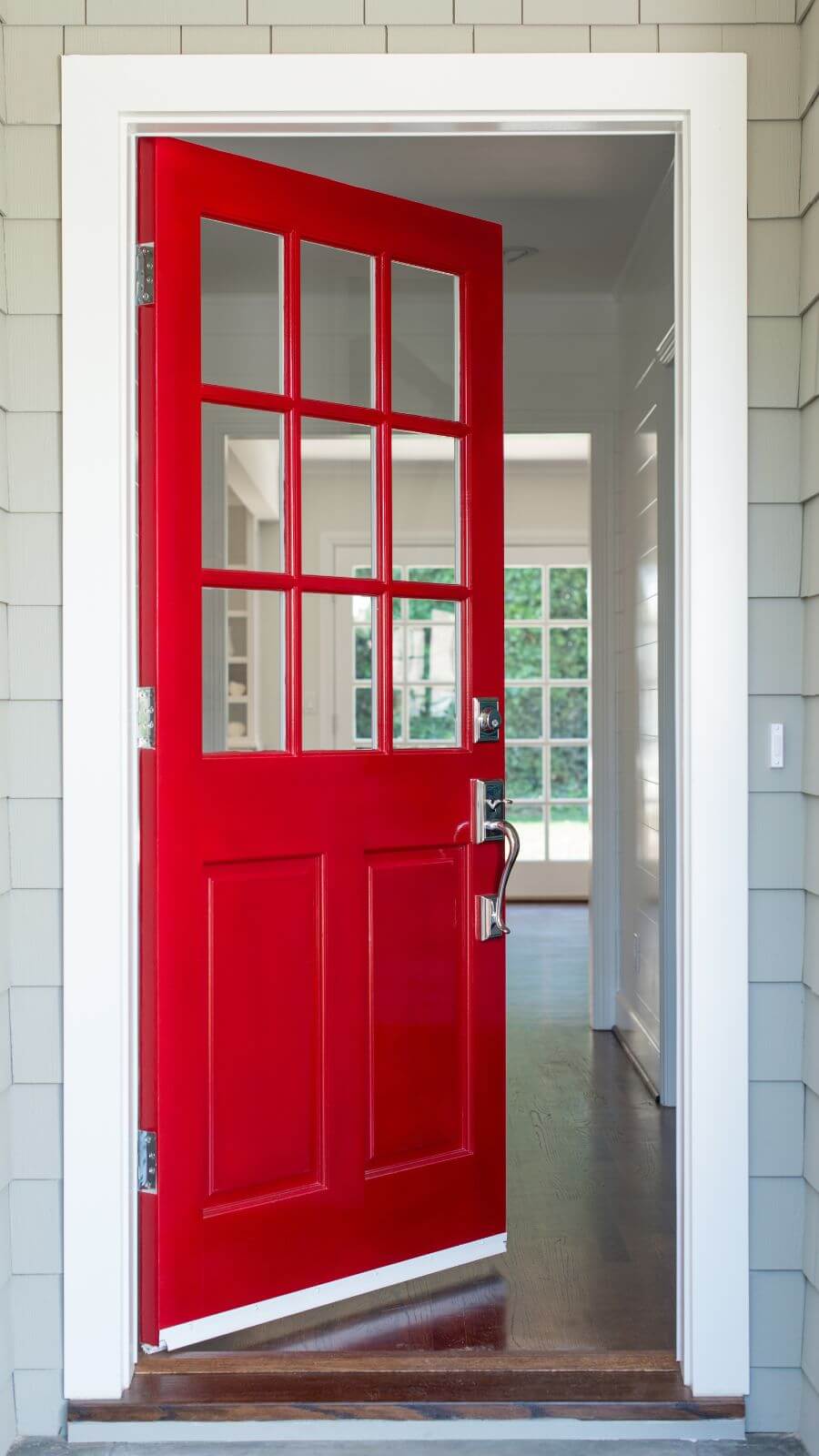
Once you’ve painted your door and given it ample time to dry, reinstall the door hardware. Approach this task with care to avoid scratching the newly painted surface.
Fasten the hardware tightly to ensure it operates smoothly. Pay special attention to the door knobs, locks, and any decorative elements. A well-installed set not only functions better but also elevates the overall look of your entrance.
For ongoing maintenance, routinely check your door for chips or cracks in the paint. Exposure to the elements can cause wear over time, so a light cleaning and occasional touch-up might be necessary.
For cleaning, use a soft cloth dampened with soapy water to preserve the vibrant color and finish. During harsh weather, keep an eye on your doorstep for debris that could scratch or damage the paint job.
With regular care, your door will continue to welcome guests with its fresh, inviting appearance for years to come.
When to Call the Pros
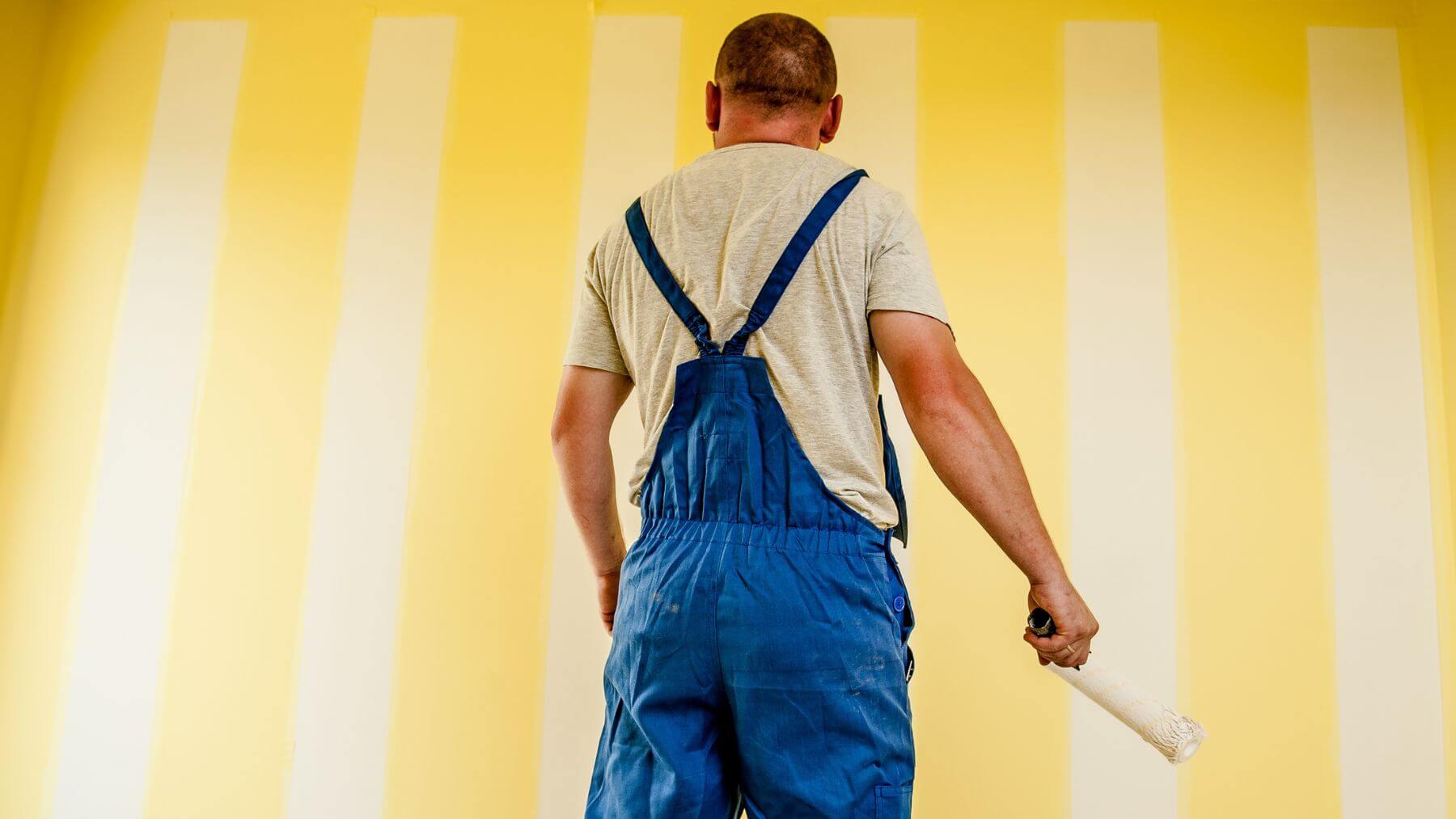
If you feel the task of painting your front door is more daunting than you initially anticipated, or time constraints have you in a bind, consider enlisting Home Painters Toronto.
These experienced professionals excel in delivering high-quality results without the fuss and complications that might arise from tackling this project on your own.
They come equipped with the correct tools, extensive knowledge of materials and techniques, and a keen eye for detail. Opting for a professional service can save you time, ensure a more durable finish, and ultimately grant peace of mind.
After all, entrusting your home’s curb appeal to the experts can turn that door makeover from a weekend burden to a hassle-free delight.